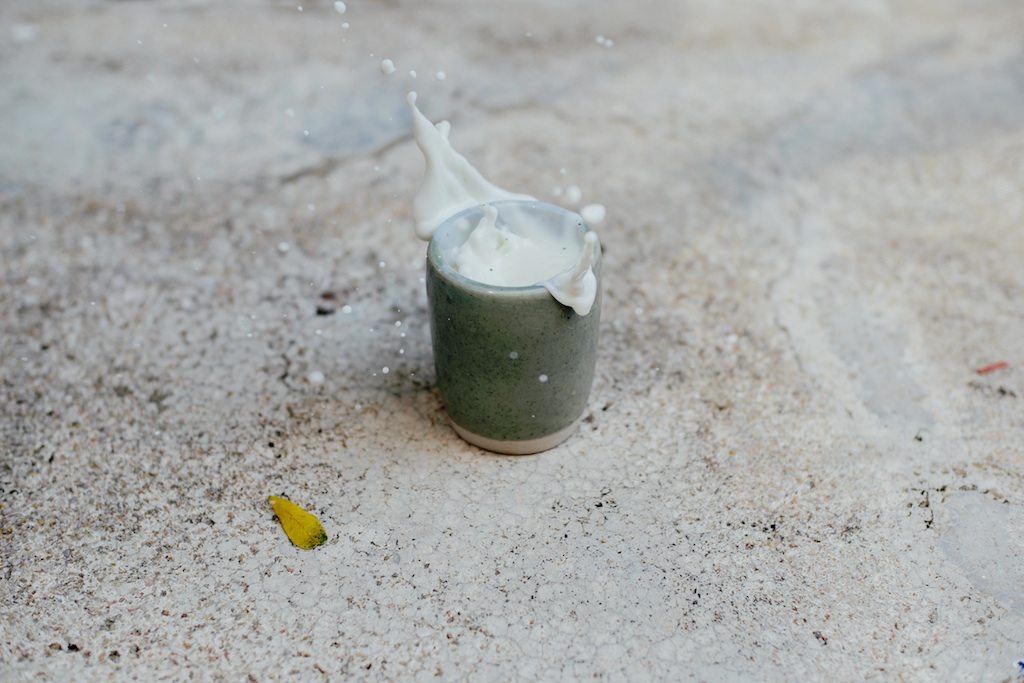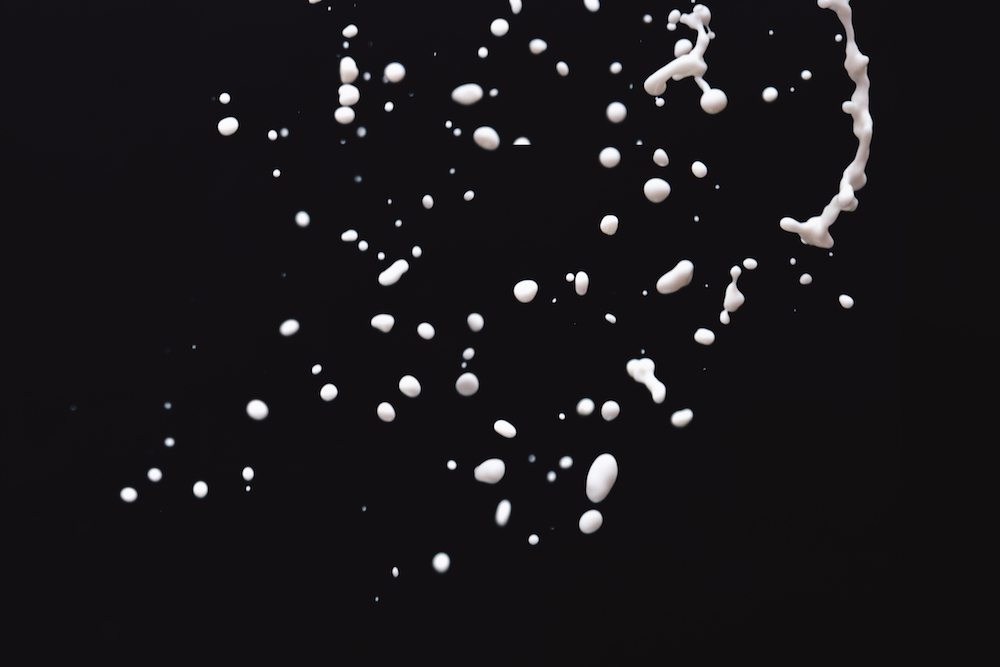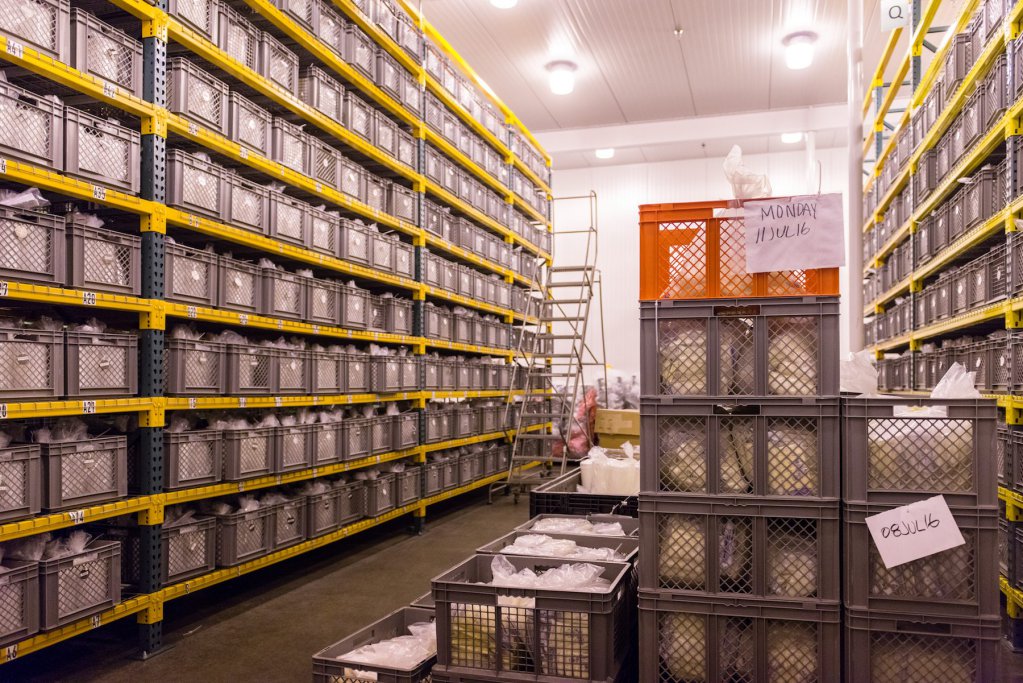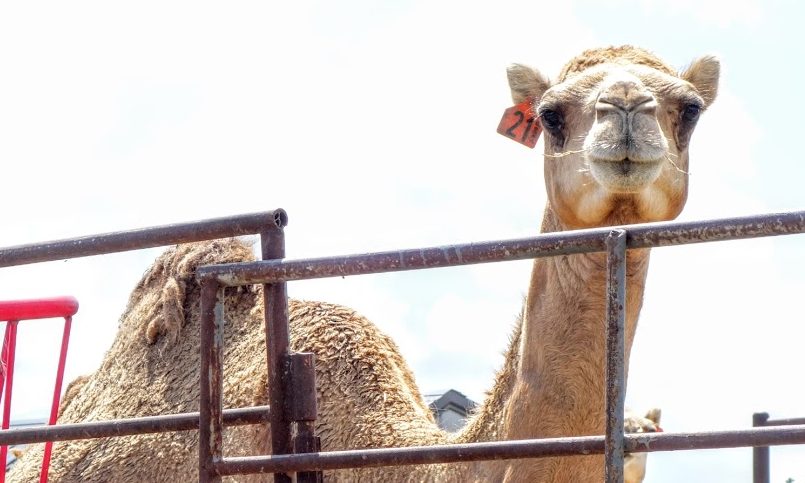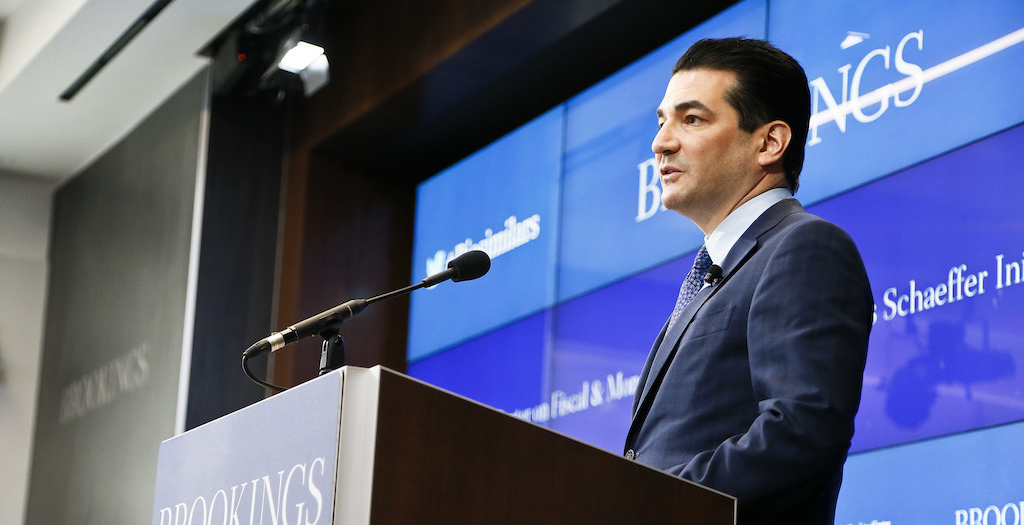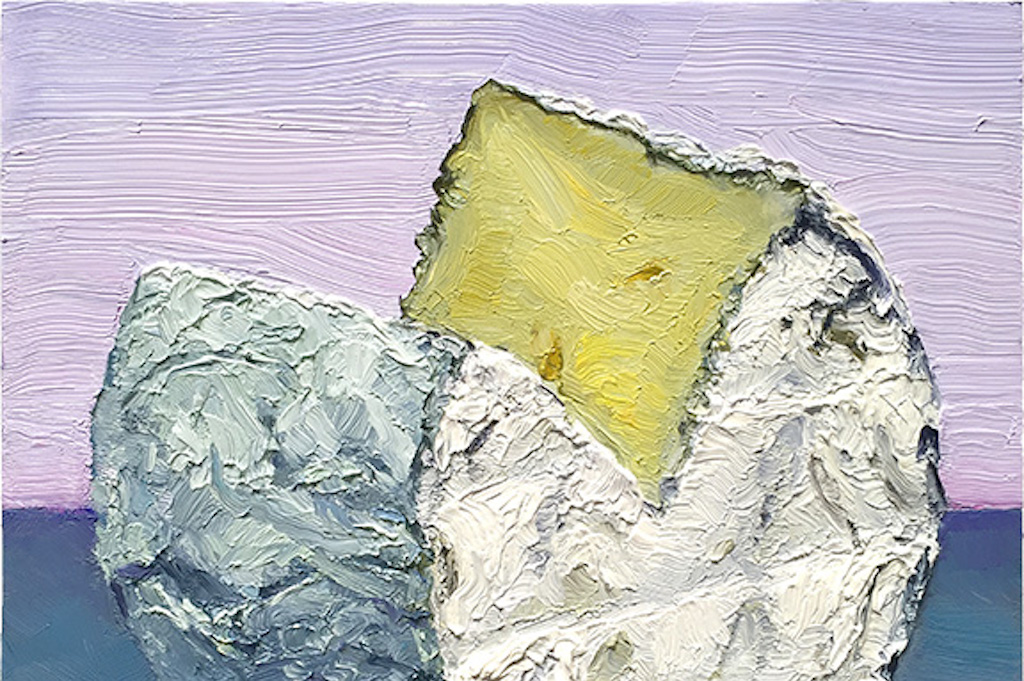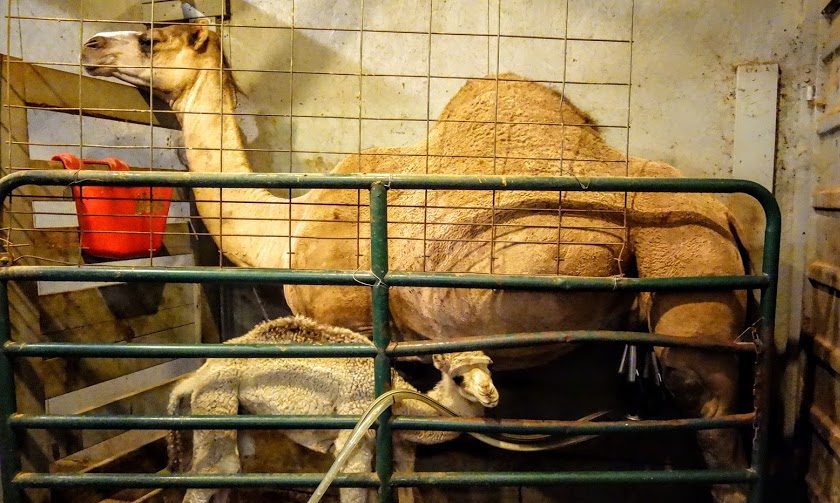
Byron Kerman
Sam Hostetler didn’t start raising camels so he could milk them. That came later. At first, he just sold or leased them to Dolly Parton’s Dixie Stampede Dinner Attraction (“top-notch riders . . . music, dancing, special effects and family friendly comedy”) in Branson, Missouri. That’s Hostetler’s other business—exotic animals. Starting out with a few ostriches more than 30 years ago, over the years he has dealt in big cats, hippos, Himalayan tahr (a cousin of the wild goat), ring-tailed lemurs, zebras, and zedonks (a zebra mixed with a donkey). The Amish farmer and his family care for a full menagerie today.
At any rate, he had these camels, and one day, he said, a North Carolina-based doctor called. She had a patient who she thought might benefit from drinking camel milk. Did he know where she could find any? And one thing led to another.
 Byron Kerman
Byron Kerman In addition to camels, Hostetler raises ostriches, zedonks, and lemurs
It’s an exemplary tale, with a cast of characters including not just Hostetler and the camel-evangelist North Carolina doctor, but also a network of Amish-Mennonite farmers spread through Pennsylvania and the Midwest and a Saudi entrepreneur from Santa Monica. Whole Foods makes a brief but significant appearance. The S-word (as in “superfood”) gets bandied about. Assorted laws are either transgressed or held not to apply, depending on who you talk to. Stern letters are written. And at the end, just like in your favorite HBO series, we’re left wondering what new twist comes next for this possibly burgeoning, possibly doomed young market.
Hostetler started to milk the camels and at first sold it to mostly to friends and neighbors. Today, however, a large percentage of the milk Hostetler produces is retailed through a California-based company called Desert Farms.
 Byron Kerman
Byron Kerman Hostetler’s camel operation is one in a network of camel milk-producing farms
Desert Farms was launched by Walid Abdul-Wahab, a 26-year-old Saudi who moved to the United States in 2008 and started working on the company as an undergraduate student at University of Southern California.
“Once I moved to California, I got drawn into the [health culture], so I figured out this was a great opportunity to introduce such a super food,” said Abdul-Wahab.
Abdul-Wahab and Hostetler met when the entrepreneur was touring the country looking for sources of milk. The pair ended up reaching an exclusive agreement. (Hostetler still sells the milk locally under his label, Hump Back Dairy, and he also occasionally gets milk or camels from other Amish-Mennonite farms for Desert Farms.)
 Byron Kerman
Byron Kerman Hostetler’s milk is sold under Desert Farms and Hump Back brand names
Word traveled through the Amish grapevine: Here was a profitable product well suited to a low-tech approach. (Camels are remarkably finicky; they typically won’t lactate if their calf isn’t in the pen with them and if they haven’t gotten to know the person doing the milking.) Today Desert Farms works with eight family farms from the Amish-Mennonite community. The smallest, according to Desert Farms, has just two camels, and each of them processes and bottles the milk individually—there is no central processing facility. The company offers fresh, frozen, and powdered milk, plus kefir, soaps, and other products.
The largest market for the milk, according to Abdul-Wahab, is in northern California, where it is sold in stores like Mission Heirloom in Berkeley. Whole Foods Market had offered the milk but no longer carries it because it wasn’t selling, according to a spokesperson.
Abdul-Wahab said that 80 percent of his sales come from online orders and that his company ships the milk around the United States and to Canada and Europe. The going price: $10 a pint for pasteurized milk, $18 for raw. Earlier this year, Abdul-Wahab told CNBC that he was selling 5,000 bottles a week, 80 percent of it to parents of autistic children.
 Byron Kerman
Byron Kerman Raw camel milk retails for $18 per pint. Above, frozen milk awaits shipment
People in Saudi Arabia have been drinking camel’s milk for centuries as a health remedy or on special occasions to honor guests. In this country, the spurt of interest in the milk is tied to its reputation for having curative powers.
Millie Hinkle, the naturopathic doctor from North Carolina who first got Hostetler interested in milking his camels, has been at the forefront of the U.S. camel dairy industry since 2009, when she received FDA approval for the milk to be treated like cow’s milk so that she could do medical research on it, she said. She also developed a kit to test for antibiotic residue in the milk. She had read an article in an alternative-health magazine about how “it was good for certain illnesses.”
She shared stories with me about children with autism who became much more communicative after drinking camel’s milk for several weeks and about stage-4 cancer patients who “were out of the hospital in a few days.”
 Byron Kerman
Byron Kerman A camel at Hostetler’s Missouri farm stretches its legs
A 2013 study in the Evidence-Based and Complementary Alternative Medicine journal found that children with autism-spectrum disorder showed improvements in behavior and reduced oxidative stress after consuming camel’s milk for two weeks. And a number of studies in Middle Eastern countries and India found that the milk helped regulate blood sugar levels in Type 1 and Type 2 diabetics.
“I could tell you miracle stories,” Hinkle said. The Wall Street Journal reported in 2009 that Hinkle “sometimes tears up when talking about her quest” to make camel’s milk available. A photo on the website for her company, Camel Milk USA, shows her smiling, with her arm wrapped around a camel.
Until recently, you could read even more miracle stories on the Desert Farms website, which called out studies and testimonials citing its effectiveness in treating or preventing not just autism, diabetes, and cancer, but also allergies, autoimmune conditions such as Crohn’s disease and multiple sclerosis, macrocytosis, thrombocytopenia, megaloblastic anemia, tuberculosis, and Alzheimer’s disease.
 Byron Kerman
Byron Kerman Camel milk advocates claim it can mitigate the symptoms of autism and diabetes
Does that sound too good to be true? The Food and Drug Administration thought so, and on September 15 sent Desert Farms a warning letter laying out the facts of life for the company. The key fact: By marketing its products as therapeutic, Desert Farms was going way beyond the kind of health claims that food manufacturers are allowed—with lots of limitations—to make. In fact, the letter states, “The therapeutic claims on your website and Facebook page establish that these products are drugs because they are intended for use in the cure, mitigation, treatment, or prevention of disease.” And you can’t sell a drug in interstate commerce without FDA approval, which Desert Farms doesn’t have and probably can’t get, given the kinds and amounts of data required. (There’s a reason why new drugs cost a billion dollars or so to develop.)
So if you look today, the health claims are gone from the Desert Farms site. On the other hand, if you search online for “camel milk autism,” Google will return a hundred thousand results. Maybe some of them deny that the milk is a miracle cure, but I haven’t found any yet.
 Byron Kerman
Byron Kerman Back at the farm, Hostetler also raises ring-tailed lemurs
It’s easy enough for Desert Farms to banish health promises from its advertising. But that leaves another potential regulatory issue, which is that devotees want the raw, unpasteurized product. And raw milk is problematic.
Not so, says Abdul-Wahab. “A lot of people don’t know that raw camel’s milk is actually exempt from the raw milk regulations because camels aren’t hoofed animals,” he says.
Maybe. After looking into his claim, I’m still confused. When the FDA approved Hinkle’s proposal for a change in milk regulations, a spokesman told the Wall Street Journal that “we wanted to improve the science basis in the definition” of milk coming from hoofed mammals to include “species that may not have ‘true hooves,’” such as camels. The FDA changed the rules regarding milk in 2009 and 2015 to include camels alongside cows and goats. On the local level, the Missouri Milk Board also revised its rules in 2015 to include camel’s milk in its Pasteurized Milk Ordinance, meaning that the same rules for milk apply and that the raw milk can be purchased only directly from a farm, according to the Missouri Department of Agriculture.
 Byron Kerman
Byron Kerman The founder of Desert Farms claims camel milk is not regulated in the same way as cows’ milk
As someone who is religious and limits how much he engages with technology and the outside world, Hostetler said he isn’t interested in tangling with regulators over whether or not he can sell the raw milk across state lines. Despite the fact that Abdul-Wahab said the raw milk laws don’t apply to him, Hostetler said the company has an attorney with Farm-to-Consumer Legal Defense Fund working to prove that camels should not be categorized with the other animals.
A couple months after interviewing the Desert Farms owner, I reached out to Peter Kennedy, the attorney with the legal defense fund, to find out how they are handling FDA regulations. Kennedy later left a voicemail saying that Abdul-Wahab no longer wanted his name mentioned in the story and that they “are waiting to see what’s happening with the FDA.”
I wanted to find out how the Missouri Milk Board is enforcing the regulations but a spokesperson for the agriculture department declined interview requests.
 Byron Kerman
Byron Kerman Regulatory gray area: the FDA has recently cracked down on raw milk buying clubs. Above, the pasteurizing facility used for Hofstetler’s milk
Similarly, an FDA spokeswoman just sent a copy of the rules regarding camel’s milk in response to a request for an interview. But she did write that “camels’ milk must adhere to all the same requirements that cow’s milk is held to.”
And that bar seems to be rising. In recent years, a key safe haven for raw milk fans has been the buyer’s club. The buyers enroll, typically signing an elaborate contract that extolls the rights to free speech and association and denies that any commerce is taking place. Meanwhile, somehow, cash and milk change hands. A few weeks ago, FDA demanded records of an 1,100-member North Carolina club associated with Miller’s Organic Farm of Bird-in-Hand, Pennsylvania. The Amish-owned farm, which offers raw camel’s milk in addition to raw cow’s milk and other products, has been in a dispute with the agency since its unpasteurized chocolate milk was identified as the likely source of two cases of listeria, one of them fatal, in Florida and California. Raw milk clubs have mostly been under the radar. That could change now.
Hostetler, for one, doesn’t mind. If the state or the FDA tells him he cannot ship raw milk, Hostetler said he would just send all the milk for Desert Farms to a processor to be pasteurized.
 Byron Kerman
Byron Kerman Some camels can only be milked with their calves in the stall
Meanwhile, back on the farm. There are markets and regulations and distribution networks, and then there are farms. Here on Hostetler’s it’s milking time. He guides us over to the barn, where he and his farmhands milk 28 camels. An Amish employee uses a milker with a vacuum underneath the camel’s udder and then brings the milk in a bucket to a nearby cooler.
After the milking, we hop into an all-terrain vehicle for a tour. As Hostetler shares his story—he has four sons who work in agriculture and he leads an Amish-Mennonite church down the road—we drive over elevated rock quarries and across open fields, with animals on all sides. I’m confident that you won’t find a better safari in southern Missouri.
Hostetler, who has the traditional long beard, also has a replica of Noah’s ark near his house.
“I have thought about that story lots of times when I handle animals—they are mean, they are wild—and I’ve thought about how big a wonder it was how the animals laid down their wild nature and walked into the ark,” he said.
While we were at the farm, a neighbor, who is diabetic, stopped by to see if one of the farmers who works with Hostetler wanted to buy 40 pounds of muenster cheese. She said she buys the raw camel’s milk from Hostetler and drinks about a pint each week.
“I drink it three or four times a week, and that’s enough to keep my levels low,” said Barbara Reyelts who owns a beef cattle farm. “If I have a spike in my sugar and I notice it, I check it, and then I’ll drink a little more.”
Abdul-Wahab said he drinks a pint a day.
“I have a sugar problem myself,” Hostetler said. “But if I drink camel’s milk, I can eat pie and ice cream with the rest of ya; if I don’t, I better go a little easier.”


